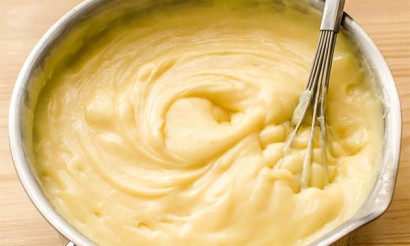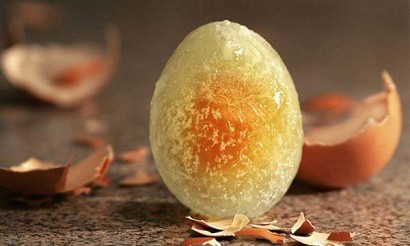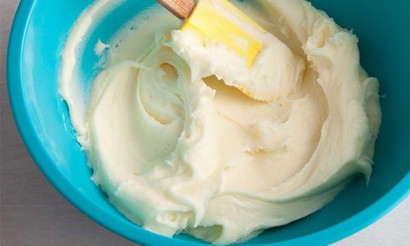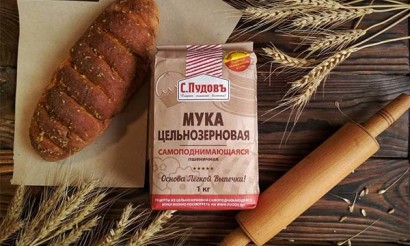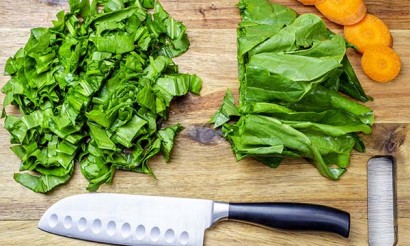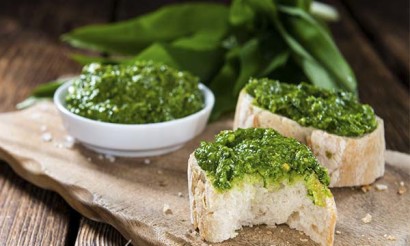In what dishes and drinks turmeric is added
Turmeric is a spice used in cooking and medicine since ancient times. Most often it is sold in powder, but you can also buy the root, which has a more pronounced taste and aroma. It should be noted that this spice cannot be classified as aromatic. It has a rather neutral subtle taste and unexpressed odor, has a slight spice and bitterness. Its main use is for dyeing dishes a bright yellow or orange color. Because of this characteristic, turmeric is often called Indian saffron and is used about the same. However, adding it in large quantities can ruin the taste because there is a noticeable bitterness.
This spice is widely used in the cuisines of India, Southeast Asia and the Middle East. There, the spice is added to meat, fish and vegetable dishes, cooked with it tea, coffee, dairy drinks and desserts. It is included in a variety of spice mixtures. Curcuma is an important ingredient in curries. It is thanks to this spice that the gravy has such a rich orange color. Often in Eastern cuisine turmeric is used in rice dishes, the spice gives it a beautiful yellowish hue and subtle flavor.
Turmeric is a popular and widely used medicine in folk medicine. The spice has a beneficial effect on the work of all internal organs, especially the digestive system, enhances immunity, helps to fight colds and inflammatory diseases, removes toxins from the body.
What is turmeric?
This perennial herbaceous plant is a relative of ginger. Its homeland is considered India or Indochina. There, too, it was widely used in medicine and cooking. The root of the plant is used. Outwardly, the root is very similar to ginger, but under the thin yellowish-brown skin there is a dense flesh of bright orange color, which stains the hands when working with the product. The taste of turmeric root is also remotely similar to ginger. It is slightly spicy and bitter. Often it is dried and then made into powder. This spice is more widespread because it has a long shelf life and is easy to use. The powder does not have a rich aroma and taste, but its excessive use can also give excessive bitterness to dishes. But in terms of content of useful substances, this product is not inferior to fresh turmeric root.
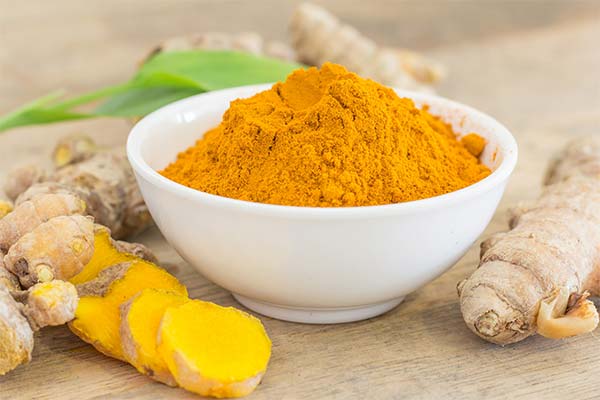
Types of
To date, there are more than 90 species of this plant, but only 3 have received their use in cooking.
- Curcuma long. It is this type of herbaceous plant that is most widespread. In the wild, it is found only in India. This same country is its main exporter in the world. A powder of ground dried rhizomes of turmeric long is part of most spice mixtures. It is used in the preparation of many unsweetened dishes. The rhizome consists of thin stalks, on the ends of which small tubers are formed.
- Aromatic turmeric. The product made from the root of this type of plant has a slightly more pronounced aroma and a rich color. It is used primarily in the manufacture of confectionery products. The spindle-shaped tubers that form on the roots of the plant are used. The plant is found not only in India but also in some regions of South Asia.
- Curcuma caedaria. This species has a wider geography of cultivation. With the exception of India, it is cultivated in southern China, Indonesia and Thailand. The root of turmeric celodaria is shaped like a pear and about the size of a pigeon's egg. It is characterized by a distinct camphor aroma and a rather bitter and pungent taste. It is primarily used in the production of liqueurs. It is also added in the manufacture of some confectionery products.
As already mentioned, the main distribution is turmeric long. Many prepared spice blends include this particular type of plant. It has a fairly calm, neutral flavor and aroma, so it is suitable for preparing a variety of dishes, desserts and drinks.
Useful properties of turmeric
Since ancient times, turmeric has been used as one of the main medicines of traditional medicine in China and India. It is a very important element of the ancient science of life Ayurveda. In India, turmeric is used to treat skin conditions, inflammation, colds, and gastrointestinal disorders. Recently, the spice is increasingly becoming the object of study of modern science and medicine. Experiments and studies have already shown that the use of this spice really has a positive effect on the human body.
Such an effect is due to its chemical composition. The root contains many useful vitamins and minerals, vitamins B, C and K. Vitamin K is known to help produce antioxidants in the body that help eliminate free radicals and toxins. Therefore, turmeric helps fight the formation of cancer cells. Studies are being conducted on the island of Taiwan to study the effect of turmeric on reducing the incidence of many types of cancer, especially colon and breast cancer. B vitamins have a favorable effect on the nervous system, help fight stress and depression, help strengthen the walls of blood vessels, the removal of bad cholesterol. Vitamin C affects the immune system, increases the body's resistance to pathogenic bacteria, viruses, inflammation.
Also includes phosphorus, iron, iodine, potassium. All these elements in combination with the available vitamins also have a favorable effect on the work of all body systems. The yellow dye curcumin contains relieves inflammation in the joints, improves liver and digestive tract function, and helps fight fat deposits.
The spice is also rich in essential oils. They also strengthen the immune system, help fight inflammatory processes in the body, help treat many colds, have a beneficial effect on the skin.
Consumption of turmeric is indicated for people suffering from diseases of the digestive system, liver and kidney problems, hypertension, suffering from long-term depression, being under constant stress. The use of turmeric helps regulate blood sugar, which is good for the prevention of diabetes.
When you have a mild cold, it is recommended to drink a drink made with the addition of turmeric.
It is worth watching the dosage. This spice has no special contraindications, but nevertheless, its excessive use can provoke a negative reaction of the body. The overabundance of useful substances and vitamins also has a negative effect on the work of the body, as well as the lack. The recommended daily norm is no more than 5 grams of spice per day.
How to choose turmeric correctly
In order for turmeric to really have a beneficial effect on the body and give the taste, color and aroma to a dish, you need to choose and store the product correctly.
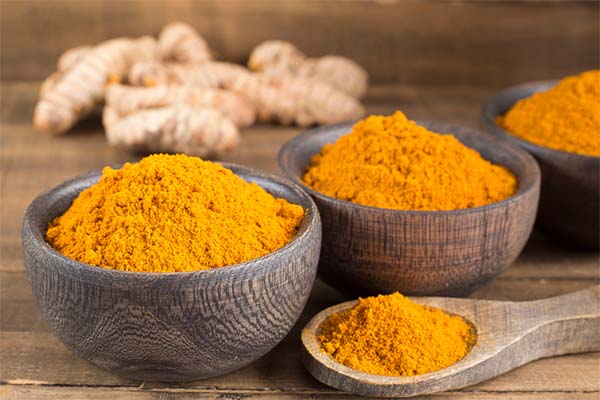
The best option is to buy fresh turmeric root, rather than using already ground powder. In the first case, more useful substances are preserved, and the flavor of the product is more saturated. Before buying, the root should be carefully inspected. It should not be soft, dry and wrinkled. On the surface of fresh product there are no soft and damaged places. To check the freshness, you need to remove a little skin with your fingernail. If a bright and spicy aroma is felt, the root can be bought.
If you buy a ready-made powder, you should be just as careful in selecting it. It happens that manufacturers or sellers mix turmeric with starch to make the cost of the product cheaper. Take a small amount of powder and grind it between your fingers before you buy it. A fresh spice will immediately give off an aroma. An odorless product tells you that it has been lying around for a long time. You should refuse to buy it; it is not edible. Also the spice always has a bright color, it can not be pale yellow. The color varies from bright yellow to orange.
The quality of the product can be checked at home. To do this, you need to dilute a small amount of spice in a glass of water. It will immediately begin to color the water, but it will not dissolve completely. If white streaks began to appear, there is starch in the composition. Also the presence of starch or excess moisture is indicated by a lot of lumps.
If the powder is bought in the store in the factory packaging, it is worth choosing an already proven brand of spices. The package should be opaque and airtight. Spice does not tolerate exposure to direct sunlight and moisture.
It is equally important to properly store the purchased product, so that its useful properties do not escape. Fresh root is better wrapped in a plastic bag and stored in the refrigerator, and the powder - in a sealed container with a tightly closed lid in a cool and dark place. The shelves of an ordinary kitchen cabinet are quite suitable for this.
In which dishes and drinks turmeric can be added
The spice is suitable for vegetable, meat, fish dishes, soups, especially legumes, snacks, gravies and sauces. Also with turmeric you can prepare healthy smoothies, drinks based on water and milk. To make the substances in turmeric better absorbed, it is recommended to use it with foods rich in healthy fats, combined with pepper or ginger, milk.
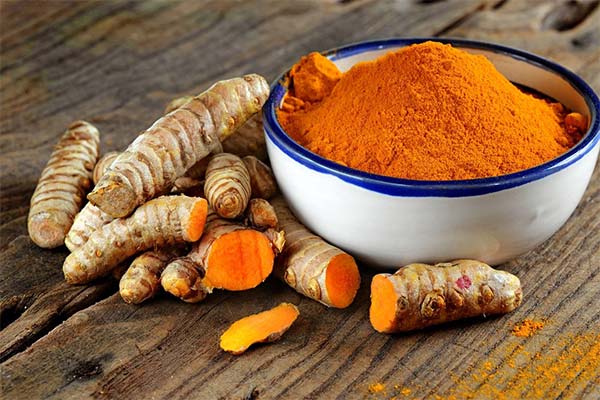
Add turmeric:
- In rice;
- soup;
- stewed vegetables;
- Indian sweets;
- tea;
- milk;
- sauces and gravies;
- meat.
For example, milk with turmeric has been considered a very useful drink in India since ancient times. It helps to improve intestinal function, support the immune system and fight colds.
Recipes for dishes and drinks with turmeric
Milk drink with turmeric
Ingredients:
- 50 g of ground turmeric;
- 0.5 tsp. ground black pepper;
- 120 ml of cold water;
- 250 ml of milk (any, it can be animal or vegetable);
- 1 tsp. clarified butter or flavorless vegetable oil;
- honey as desired.
Preparation:
- The first thing to do is to prepare a turmeric-based paste. It can then be stored in the refrigerator for a month. To do this, mix turmeric, black pepper and water. All thoroughly mix so that there are no lumps.
- The resulting mixture put on low heat and boil until a thick mass, stirring constantly, so that the product does not stick to the bottom of the container.
- Now proceed to the direct preparation of the drink. Pour the milk into a saucepan or saucepan, add to it 1 tsp. of cooked turmeric paste, melted butter, stir well and put on low heat. Bring it to the boil, stirring constantly. If desired, add honey.
This drink not only strengthens the overall health and immunity, it also has a choleretic effect.
Rice with turmeric and green peas
Of course, turmeric, first of all, is associated with the dishes of Eastern cuisine. It is they usually have a bright golden hue, a strong aroma of spices and spiciness. This spice is part of the curry spice mix. To diversify the dinner table and add some color to the menu, you can cook rice in the Indian style. It will be a great side dish to any meat or fish dish.
Ingredients:
- 1.5 tbsp. rice (it is better to take long grain);
- 2 tbsp. butter (preferably melted), you can replace it with olive oil;
- 2 cloves of garlic;
- salt and turmeric to taste;
- 0.5 tbsp. green peas, can be frozen.
Preparation:
- In a pot with a thick bottom put the rice. First, wash it well in cold water. Change the water until it becomes clear. It is usually enough to do this 2 times. Add all ingredients except for green peas.
- Pour cold water over the rice. The amount of water should be twice the amount of rice. Then put it on boil. Bring to the boil and cook slowly with the lid on. Long-grain rice cooks faster than round rice.
- When all the moisture evaporates and the rice is almost ready, add the peas to the pot, cover and let stand for another 10 minutes. You can turn off the heat on the stove. The dish will finish at the expense of the residual heat.
- You can add fresh herbs. If you want to get an authentic taste, it is recommended to use coriander or just chop parsley.
Turmeric can be added to almost all meat dishes. It will give them a little spice and a beautiful bright hue.
Cocktail
It is also recommended to drink a drink made on the basis of kefir and turmeric at night to strengthen the body. For this you will need a glass of kefir, you can take unsweetened yogurt or ryazhenka, some turmeric, a couple of spoons of boiling water, add sugar or honey to taste. It is necessary to dilute turmeric with boiling water, add honey or sugar, and stir. Pour the resulting mixture into a glass of kefir. This useful cocktail will help to establish normal digestive function. It is drunk daily at night.
Where not to add
Since turmeric does not have a strong spicy aroma and taste, it basically has no restrictions in its use. It is suitable for both vegetable and meat dishes, can be used in desserts, above all for coloring the product. But you should not abuse the dosage. Too much spice will make the taste bitter. The use of the spice depends on taste and preference. All the same, turmeric will look more organic in oriental dishes, in baked goods, desserts, some drinks. It is not necessary to add spice everywhere for the sake of its useful properties. In cooking, it is important to stick to the harmony of taste and color. Russian or European cuisine for the most part does not imply the presence of turmeric in them, so in their preparation you should refuse to use it, unless, of course, it is indicated in the recipe.
Precautions for the Use of Turmeric
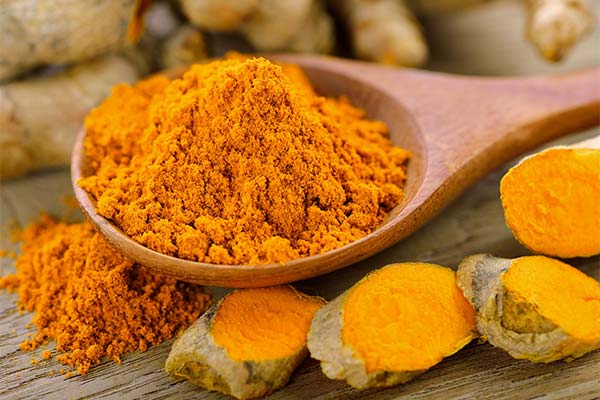
This spice has fewer restrictions on its use than many other bright and spicy spices. It has almost no contraindications, but there are still some. These include low blood pressure and a type of diabetes in which a sharp drop in blood sugar levels is possible. Also, some people may have an individual intolerance to the product.
Excessive use of turmeric can also lead to negative consequences. Spice in large quantities can cause an allergic reaction. Also, it should be used with caution in people during exacerbation of gastrointestinal tract diseases, urolithiasis, acute cholecystitis. Large doses of turmeric promotes jaundice of the skin.
It is necessary to remember that no matter how useful the product is, violation of measures always leads to negative consequences. Instead of benefits, it can bring harm.
«Important: All information on this site is provided for informational purposes only. purposes only. Consult a health care professional before applying any recommendations. specialist before you use any of the recommendations. Neither the editors nor the authors shall be liable for any possible harm caused by materials."

